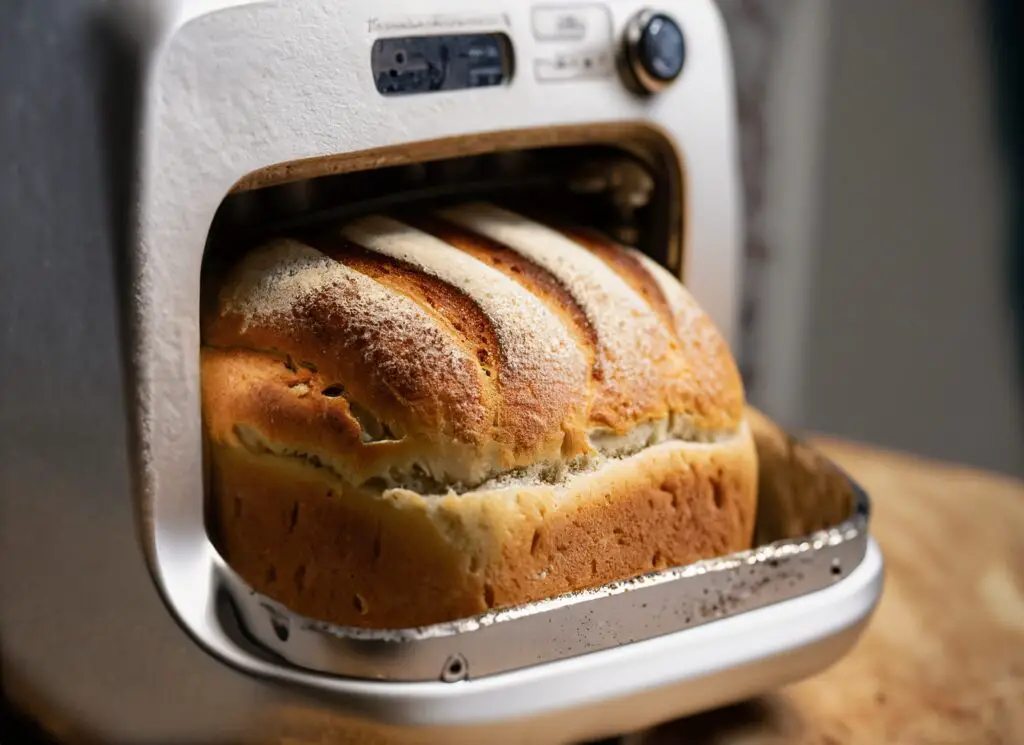Have you ever dreamed of making fresh, warm bread at home without the hassle of kneading and rising dough?
Bread machines are a fantastic way to create delicious homemade bread with minimal effort. However, if you’re new to the world of bread machines, you may be wondering how do bread machines work and if they’re right for you.
As an experienced baker and bread machine enthusiast, I know the ins and outs of bread machine operation and can guide you through the process. Whether you’re a novice baker who just bought their first bread machine or an experienced baker looking to learn more about the technical aspects of bread machine operation, this comprehensive guide is for you.
In this article, I’ll explain how bread machines work, including the different components and functions that make them so convenient. I’ll also provide tips and tricks for using a bread machine to achieve the perfect loaf every time.
By the end of this post, you’ll have a better understanding of how bread machines work and be ready to start baking your own delicious loaves at home. So, let’s get started!
How Do Bread Machines Work?

Bread machines automate the bread-making process by mixing, kneading, rising, and baking the dough. Here’s how it works:
- Mixing – To use a bread machine, you start by adding ingredients to the mixing chamber in the order specified in the recipe. This typically includes flour, yeast, water, fat, sugar, and salt.
- Kneading – Once the ingredients are mixed, the bread machine will begin kneading the dough. This is done by using a paddle or hook attachment to stretch and fold the dough.
- Rising – After the dough is kneaded, it needs time to rise. The bread machine will create a warm, humid environment to help the dough rise properly.
- Baking – Once the dough has risen, the bread machine will bake the bread. This is typically done using a heating element located at the bottom of the machine.
How to Use a Bread Machine
Using a bread machine is relatively simple. Here are the basic steps:
- Add the ingredients to the mixing chamber in the order specified in the recipe.
- Select the desired settings on the control panel.
- Press the start button.
- Wait for the bread machine to do its job.
- Remove the finished bread from the mixing chamber.
Bread Machine Settings
Bread machines typically have a variety of settings that allow the user to customize their bread. Here are some of the most common settings:
Bread Type
Bread machines can make a variety of different types of bread, including white bread, whole wheat bread, and even gluten-free bread. So no matter your preference, you’re likely to find something that suits your taste.
Loaf Size
Bread machines can make different sizes of loaves, typically ranging from 1 pound to 2 pounds. If you’re feeding a crowd, you may want to opt for a larger loaf size, while a smaller loaf size might be perfect for a single or a couple.
Crust Color
Bread machines can adjust the crust color of the bread, with options ranging from light to dark. Whether you prefer a softer crust or a crispier one, the bread machine has got you covered.
Baking Time
The baking time can also be adjusted to ensure that the bread is baked to the desired level of doneness. You can set the timer according to your preference, depending on how crispy and brown you like your bread.
Understanding Bread Machine Cycles
To get the most out of your bread machine, it’s important to understand the different cycles involved in making bread. Here they are:
- Mix/Knead – During this cycle, the bread machine mixes and kneads the dough. This process usually takes around 20-30 minutes.
- Rise – During this cycle, the bread machine creates a warm, humid environment to help the dough rise properly. This cycle usually takes around 60-90 minutes.
- Knock Down/Proving – During this cycle, the bread machine knocks down the dough by briefly kneading it again to remove any air pockets. This process usually takes around 10 minutes.
- Bake – During this cycle, the bread machine bakes the bread. The baking time can vary depending on the type and size of the loaf you’re making.
Bread Machine Troubleshooting
Sometimes, things may not go as planned when using a bread machine. Here are some common problems and how to troubleshoot them:
- Dough is too dry or too wet – Adjust the recipe by adding a little extra flour or water until the dough is the right consistency.
- Bread doesn’t rise properly – Check the expiration date of your yeast and make sure it’s still fresh. Also, make sure the dough has enough time to rise properly.
- Bread is too dense – Make sure you’re using the right type of flour for the bread you want to make. Also, try reducing the amount of salt in the recipe.
Bread Machine Tips and Tricks
Here are some tips and tricks for making the most of your bread machine:
- Follow the recipe – When using a bread machine, it’s important to follow the recipe closely, as even small deviations can affect the outcome of your bread.
- Use fresh ingredients – To ensure the best results, use fresh and high-quality ingredients, especially yeast.
- Experiment with different ingredients – Bread machines allow you to experiment with different flours, grains, seeds, nuts, and spices to create unique and delicious loaves of bread.
- Add ingredients at the right time – Some recipes may call for adding certain ingredients, such as raisins or nuts, during the kneading process or before the final rise. Be sure to add them at the right time to avoid interfering with the dough’s rising.
- Clean your bread machine regularly – To prevent any build-up of flour or other ingredients, clean your bread machine after each use.
Conclusion
Bread machines are a fantastic tool for anyone who loves fresh and homemade bread but doesn’t want to spend hours kneading and rising dough by hand. By understanding how bread machines work and following some simple tips and tricks, you can easily create delicious loaves of bread that will impress your friends and family. Happy baking!
FAQs
What is the difference between a bread maker and a bread machine?
The terms “bread maker” and “bread machine” are often used interchangeably. However, some people state that a bread maker generally only has one function, which is to bake bread, while a bread machine often has additional functions, such as making pizza dough or jam. In terms of baking results, bread machine bread generally has a heavier and more compressed dense texture compared to oven-baked bread, which is lighter and airier. Bread makers vary in function, with some having more features than others. Ultimately, both bread makers and bread machines are machines that can help you make bread, and the terms can be used interchangeably.
What are the disadvantages of a bread maker?
There are several disadvantages of using a bread maker, including:
1. Upfront cost of the machine.
2. Homemade bread may go stale faster than store-bought bread.
3. Inability to make very large bread sizes.
4. Difficulty in making the perfect loaf of bread.
5. Fixed paddles that remain in the dough, which can affect the texture of the bread.
6. Slightly different results compared to handmade bread.
7. The machine can be bulky and noisy.
How long does bread actually bake in a bread machine?
Bread machines can bake bread in 2 to 4 hours, depending on the type of bread and the cycle used. Two-hour loaves are done on a rapid cycle, while regular bread bakes in about 3-1/2 to 4 hours. Loaves of bread that take 4 hours are generally heavier, like whole wheat breads. The baking time can take anywhere from 40 minutes to 70 minutes depending on what you’re baking. The bread machine will beep in 30 to 40 minutes after you’ve started it, which is when extra ingredients like fruits, nuts, cheese, etc. are added.


